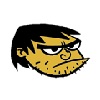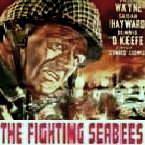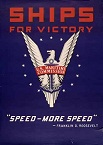Trugrit
Posts: 947
Joined: 7/14/2014
From: North Carolina
Status: offline

|
Several long years ago Alfred put together some recommendations.
I tried to find it with a search but I think it is not available anymore.
I did save the core of it:
Alfred's 12 Sub Commandments:
1. Do not use Allied subs to guard important straits. That is a defensive task which is not suitable.
Important straits should be "guarded" by aircraft and surface combat task forces, both of which have a much greater
reaction range than do sub task forces.
2. Do not place sub task forces under "remain on station" orders. Doing so negates any patrol and reaction responses.
3. Avoid as much as possible sending sub task forces to operate where enemy air ASW coverage is strong.
If you do send them there, the sub TF should be given a 3 point barrier to patrol with zero lingering at each barrier point.
4. Set your barrier points to be the distance the sub TF can move at cruise speed each 12 hour period.
This will help to shake off the enemy DL on your sub TF.
5. A sub mine laying TF will very rarely attack enemy ships. Do not expect them to drop off their mines and then attack the enemy.
6. Pay careful attention to the distance between the patrol location and the sub TF home port.
Aim for the distance to be no greater than 25% of the endurance.
If the distance is greater than 33.3% you are wasting too much time transiting to and from the patrol zone.
7. Number one thing above all else, set patrol zones where you also have air naval search operating.
Unless you can DL enemy task forces, your subs will rarely find a target to attack on their own cognizance.
Wolf Packs are not effective with the following slight exception:
Some Japanese submarines can carry float planes. If a Japanese wolf pack is formed comprised of float plane carrying submarines,
it's chances of finding enemy TFs will be better. Not because of the additional boats in the TF but because of the additional
planes out searching. Of course heavy radio traffic in the middle of nowhere might just more easily alert the Allied player
that something significant is out there.
8. Just like point 1 above, use of subs as scouts is also sub optimal if the objective is to sink enemy ships.
9. Subs which are slower than the enemy ships will rarely be able to get into position to launch an attack.
This is a major factor why points 1 and 8 are sub optimal usage of subs as those are situations where the most
likely enemy ships encountered will be combat ships which are faster than the subs.
10. The desired primary skill level for your sub commander is "naval".
The secondary skill is "aggression". Aim for 60+ in "naval" skill, the higher the better.
The naval skill rating must not be below the aggression skill rating.
11. American sub torpedo problems do not stop being a problem until September 1943.
12. Avoid placing sub patrols in shallow water. They are much more vulnerable to enemy counter measures.
Focus on deep water locations.
Alfred on setting Sub Reaction:
In general terms, to improve the odds of reacting you need
1. Good detection, the higher the better
2. An aggressive TF commander
Both of the above are independent of the two options you posed but will be more important in generating a reaction.
I note that in the past you were loathe to select high aggression leaders for your sub TFs, preferring instead to choose
on the basis of naval skill. However, in this particularly defensive mindset environment, you might want to revisit the earlier decision.
I don't place subs into base hexes for defensive purposes. Nor can I find a dev directly commenting on this situation.
So I can't give a definitive answer. If I had to choose between having the sub TF without a PZ and one with a PZ,
I would plump for denoting a PZ. But not using "Patrol Around Target". IOW I would set using at least 2 boundaries
for the reason that there are important differences between surface and sub TFs with regard to reactions.
1. Surface Combat TFs have much higher speeds than sub TFs.
2. Surface Combat TFs may have embedded floatplanes which sub TFs don't, unless it is one of the Japanese
float plane equipped subs.
3. Surface Combat TFs tend to be comprised of many more vessels than sub TFs.
4. You can set a reaction range of up to 6 for a surface combat TF but only a range of 1 for a sub TF.
The importance of these details are as follow.
(a) Due to its higher speed, a Surface Combat TF which is loitering in its base hex, without a specified PZ, if it reacts,
will not be outrun by the enemy TF it is reacting to. The same cannot be said of a sub TF reacting.
This speed disparity is not much of an issue when subs are used offensively in a PZ because they will have plenty
of equally slow merchantmen/damaged ships to target in a reaction. In your hypothetical, unless it is that Maru heading
for Frisco noted at the beginning, you are almost certainly going to be confronted with high speed enemy warships.
(b) Consequently I would prefer to be out moving in the PZ and relying upon the hex by hex movement
deliberations rather than reaction to get an interception.
(c) With its own floatplanes, should one of them spot an enemy TF, the surface TF is more likely to react than the
sub TF which is relying upon a third party spotter. A surface TF just loitering is not particularly penalised
compared with one out in its PZ but the sub TF will only itself spot the enemy TF when it arrives at the base hex.
Which makes having a 1 hex range reaction rather moot for the sub.
(d) A multiple ship surface combat TF which reacts to an enemy TF, has the potential of sinking in toto the enemy.
That ain't gonna happen with a single sub intercepting at best 1 hex away from its port.
At least if the sub TF were at sea in its PZ some hexes away from its port you have the possibility of the contact
being renewed the next turn/s and some meaningful damage being inflicted before the enemy arrives at the port.
Bottom line to me is that subs are offensive weapon platforms best used in deepwater, interdicting enemy sea lanes.
Not underemployed on home port defence. But if they must be used defensively, giving them a PZ still retains
an offensive element to their operation.
Alfred
I don't follow it in certain situations. It is a good starting point
< Message edited by Trugrit -- 6/7/2020 4:40:02 PM >
|
 Printable Version
Printable Version
















 New Messages
New Messages No New Messages
No New Messages Hot Topic w/ New Messages
Hot Topic w/ New Messages Hot Topic w/o New Messages
Hot Topic w/o New Messages Locked w/ New Messages
Locked w/ New Messages Locked w/o New Messages
Locked w/o New Messages Post New Thread
Post New Thread